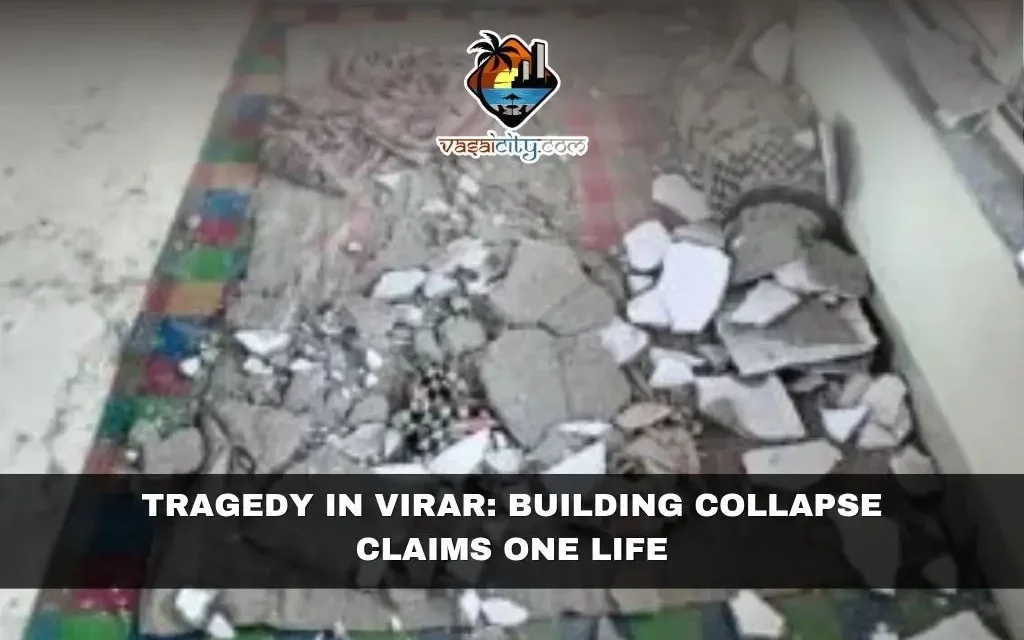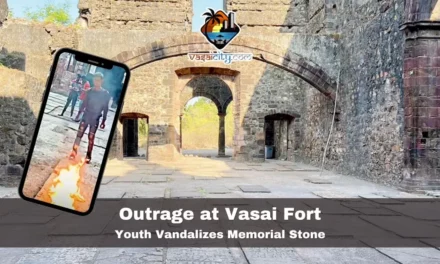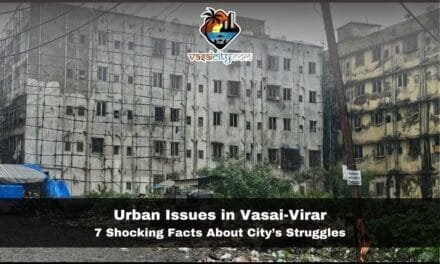Late on a rainy evening, tragedy struck the Gopcharpada area of Virar when a portion of a residential building collapsed, killing a 35-year-old woman and injuring her two young children. The incident, caused by heavy rainfall and the poor condition of the building, has once again brought to light the serious risks posed by old and neglected structures in rapidly growing suburbs.
The building, known as Pooja Apartment, had long been flagged as dangerous. It was officially listed under the C1 category by the Vasai-Virar City Municipal Corporation (VVCMC), which indicates a building is unsafe and unfit for habitation. Yet, despite repeated notices and warnings, the building continued to house several families, including the woman who lost her life.
On the day of the incident, the woman was at home with her seven-month-old baby and three-year-old son. Without warning, a part of the ceiling slab gave way, crashing down on them. Neighbours heard the terrifying noise and rushed to help, calling emergency services. The police and fire brigade responded quickly and managed to rescue the family from the debris. They were immediately taken to a nearby private hospital.
While the children survived with minor injuries, their mother suffered serious head trauma. Despite the doctors’ best efforts, she died during treatment. The children are said to be stable but remain emotionally shaken.
Following the collapse, all remaining residents of Pooja Apartment left the building, fearing for their lives. Many have taken shelter at a nearby civic-run school. The VVCMC has since issued formal evacuation orders for the rest of the building’s occupants.
An official from the civic body said, “We have started the process of vacating the building after this unfortunate incident. All buildings under the C1 category are under review, and we are initiating demolition procedures in phases.”
But this statement has not done much to calm the anger and sorrow in the community. Local activists and civic experts are questioning why action was taken only after a fatality. Many argue that notices alone are not enough if they are not followed by timely evacuations and rehabilitation plans.
“This isn’t the first time something like this has happened,” said a local urban planning expert. “There are countless such buildings across Virar, Vasai, and other parts of Mumbai’s outskirts. They are ticking time bombs. Most of them are old, poorly maintained, and overcrowded. People live in them because they simply have nowhere else to go.”
Virar, like many other parts of the Mumbai Metropolitan Region, has experienced rapid real estate growth in recent years. With the city’s population expanding and property rates soaring, low-income families have been pushed to the edges—often into older, cheaper buildings. Many of these structures are more than 30 years old, and they haven’t been maintained properly. Even basic safety checks are often skipped.
The VVCMC has a system in place to identify and categorize dangerous buildings. Under this system, structures are divided into categories like C1 (unfit for use) and C2 (in need of repair). However, the process of acting on these classifications is riddled with delays. Officials often cite procedural issues, budget limitations, or lack of cooperation from residents who fear being rendered homeless.
In the case of Pooja Apartment, the civic body had reportedly issued several notices in the past. However, there was no major attempt to move the residents to a safer location. Only after the collapse and the woman’s death did the authorities begin evacuation and demolition procedures.
The police have filed an Accidental Death Report (ADR) and are currently investigating whether the tragedy was caused by negligence. Meanwhile, questions continue to swirl around whether the woman’s death could have been prevented with earlier action.
Public safety advocates are urging the civic body to rethink its approach. “It’s not enough to demolish buildings after they collapse,” said one activist. “We need a proper system for helping people move out of these buildings before tragedy strikes. That means temporary housing, financial support, and regular audits of old buildings.”
Some experts have also called for better use of technology. They suggest creating an online dashboard where residents can see the status of buildings in their area—whether they’ve been marked dangerous, if notices have been issued, and what actions have been taken so far.
Another recurring demand is for awareness campaigns to educate residents about the risks of staying in unsafe structures. Many people either ignore the dangers or are not fully informed about them. In cases where evacuation is essential, the government must step in with clear and compassionate relocation plans.
This incident is more than just a single, sad event—it is part of a bigger issue. As India’s cities grow, civic bodies must not wait for disasters to happen before acting. The time to build safe, well-planned, and inclusive cities is now. That means investing in infrastructure, enforcing safety regulations, and above all, protecting the lives of those who live on the margins.
The collapse in Virar serves as a heartbreaking reminder of what happens when warnings are ignored, when systems fail, and when the most vulnerable are left unprotected. It is a wake-up call—not just for VVCMC, but for every civic body managing urban growth across the country.
The life lost in Pooja Apartment wasn’t just a number in a report—it was a mother, a neighbour, a member of a community. Her death should not be in vain. Let it be the moment when our cities finally decide to put people before paperwork.









